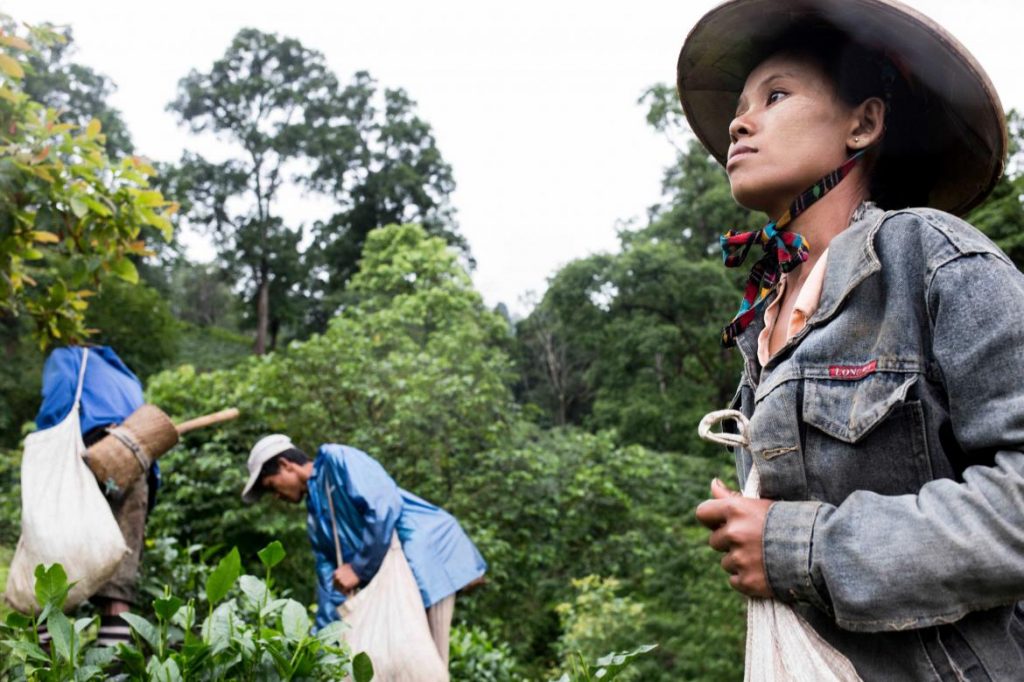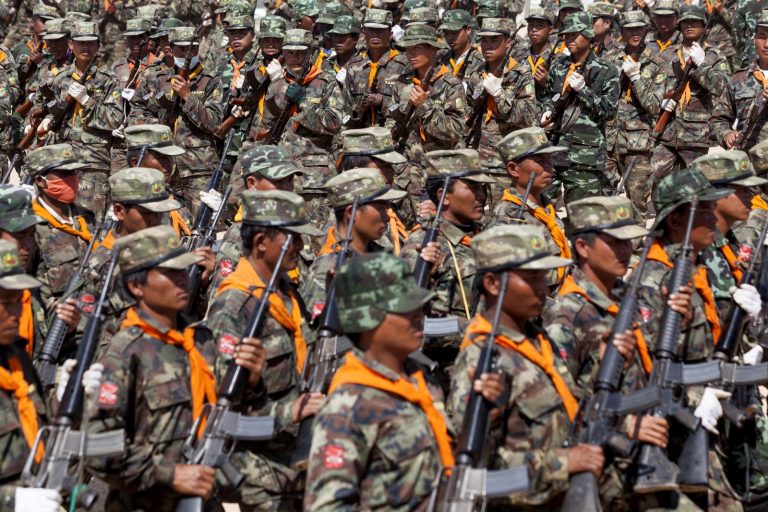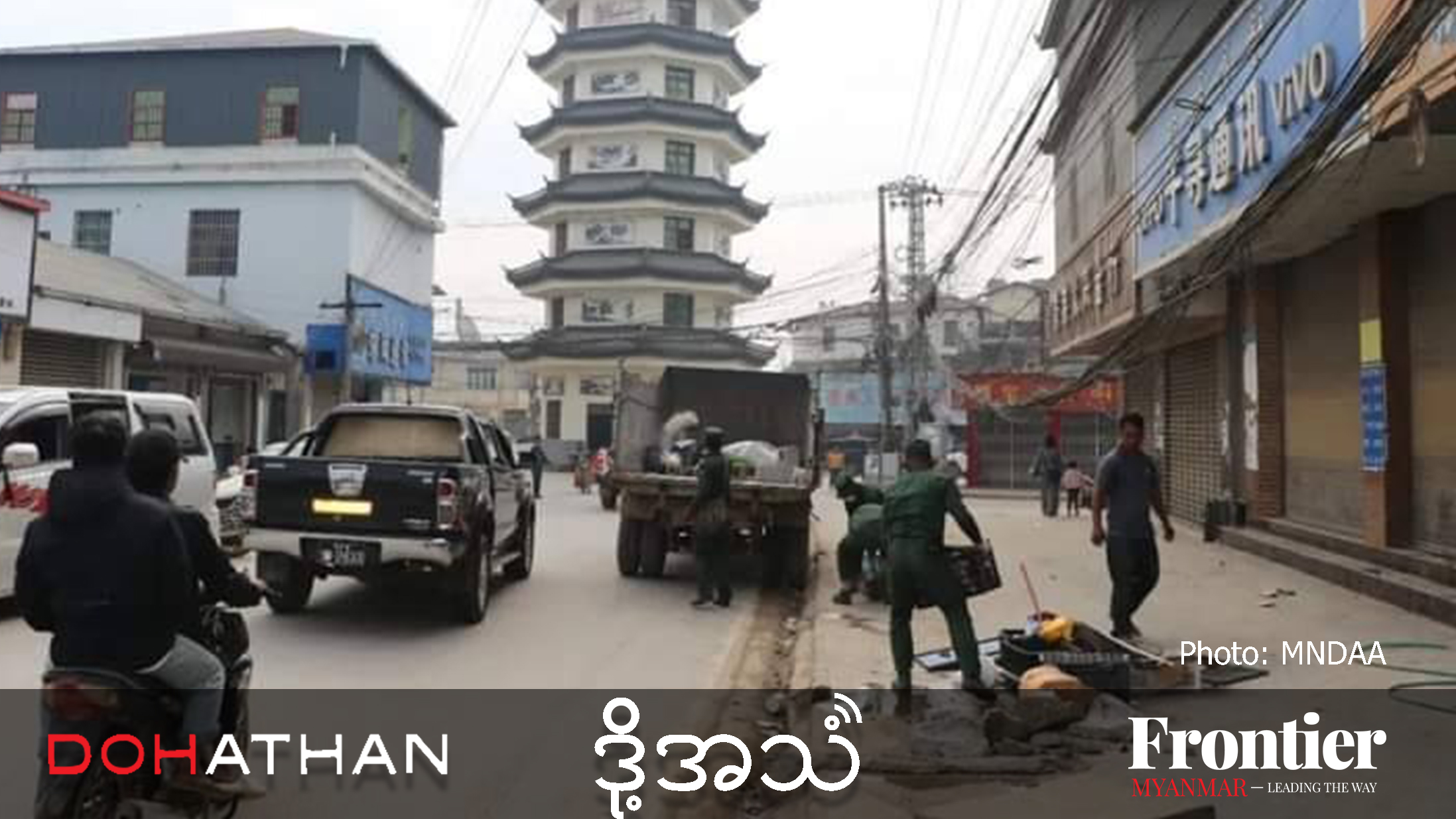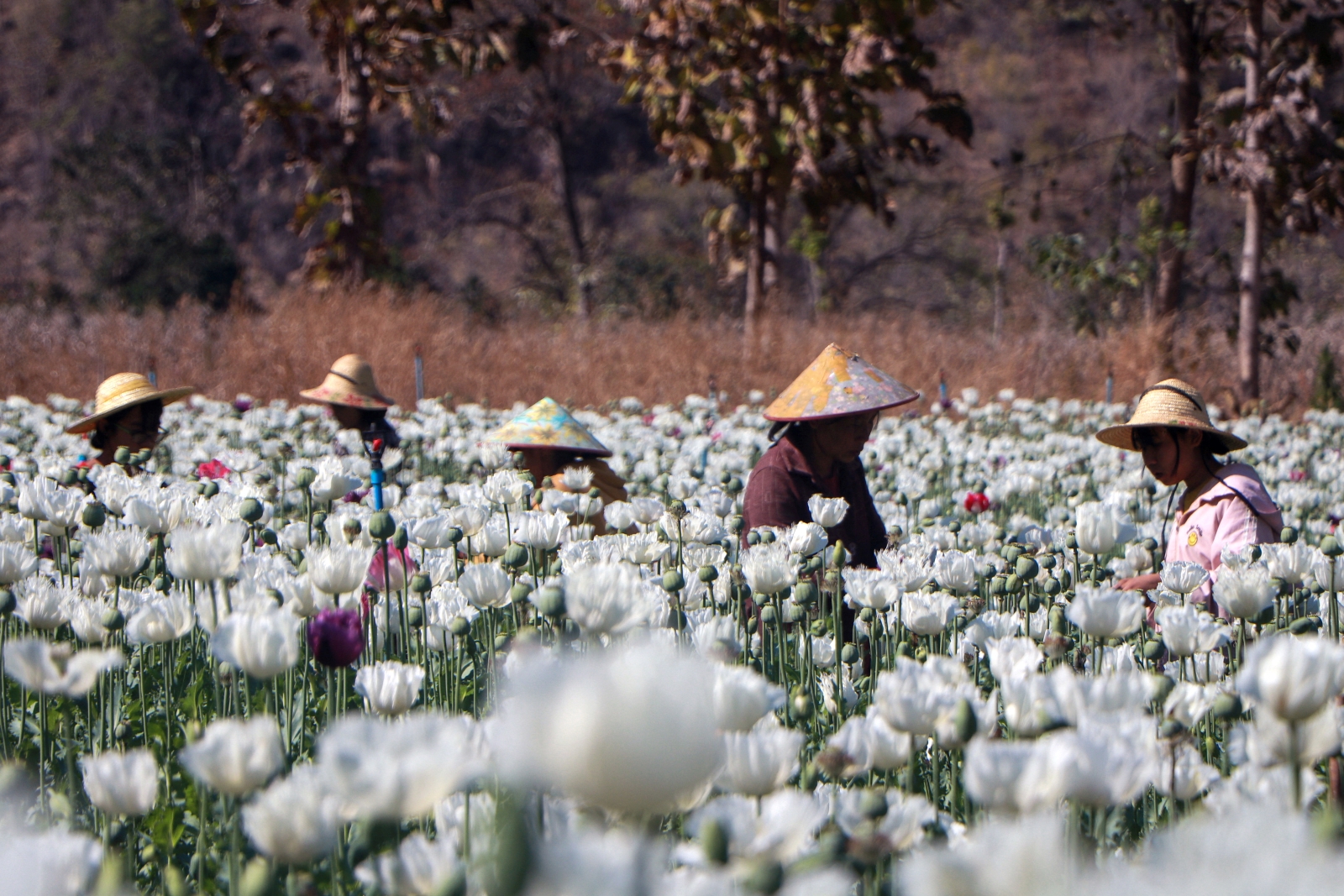A shortage of seasonal labour due to recent fighting in northern Shan State has dealt a cruel blow to a tea industry on which hundreds of thousands of farmers rely for a living.
Words & Photos ANN WANG | FRONTIER
FOR AS long as Daw Aye Tun can remember, her family has owned the 40-hectare (100-acre) tea plantation that hugs the side of a mountain near Loi Koan village, about 35 kilometres (22 miles) from Kyaukme in northern Shan State. The plantation has supported the family during decades of intermittent fighting. Recently, the area has seen an upsurge in conflict; since late last year, clashes have broken out between the ethnic Palaung Ta’ang National Liberation Army, the Shan State Army-North, the Shan State Army-South and the Tatmadaw.
Tea production is the main source of income for more than 600,000 Palaung. More than 80 percent of the tea cultivated in Myanmar is grown in Shan State and in 2014 it produced 115,000 tonnes of fresh tea leaves, said a report by the German agency for international development, GIZ.
annwang_tea15.jpg

The vast majority of tea grown in Myanmar comes from Shan State. (Ann Wang / Frontier)
When the harvest nears, migrants normally arrive from elsewhere in Myanmar looking for work. But not this year.
Support more independent journalism like this. Sign up to be a Frontier member.
“This year we cannot find a single migrant worker from the south of Myanmar,” said Aye Tun, 70, a petite, tanned Palaung woman with sunken cheeks and a shaved head, who was wearing a dirt-stained pink and purple traditional dress.
Asked about the shortage of seasonal labour, she put down the cheroot she was smoking and, mimicking guns with her hands, pointed at the sky.
“Bam! Bam!” she said, triggering laughter from others in the room.
“Because of the fighting,” Aye Tun said. “People have heard the news and are too afraid to come and work. The most recent skirmish on the mountain near her tea plantation was in April. It lasted for about an hour and she believed it involved the TNLA and the SSA-South, the armed wing of the Restoration Council of Shan State.
annwang_tea7.jpg

Ann Wang / Frontier
The fighting could not have come at a worse time for Aye Tun and other tea growers in the area. April is the start of the harvest season. The first leaves to be picked, known as shwe phi oo or “spring tea”, usually fetch the highest price of the harvest.
“We can usually get around K1,400 a viss [about 1.63 kilograms] for fresh tea leaves in April, but the price will fall to K900 a viss in May, and finally K500 a viss in June,” she said. The fall in price is because the quality of the leaves declines as the season progresses.
The family said it could not estimate how much revenue it has lost due to the fighting this season because it does not keep records of how much tea it sells each year.
“The conflict in northern Shan State has ripped through the farmers’ lives,” U Tun Myaing, 38, the chairman of the Myanmar Tea Cluster and the Palaung Tea Growers and Sellers Association, told Frontier.
annwang_tea2.jpg

A Palaung woman drinks tea at her home in northern Shan State. (Ann Wang / Frontier)
“Many of them can’t go to their farmland because of landmines or forced recruitment from different ethnic armed groups but they don’t know how or who to complain to because they have not had enough education,” said Tun Myaing, a Palaung who lives in Yangon.
The long-simmering conflict has disrupted the association’s training program for tea growers.
“We were targeting training 100 farmers in 2014, but we could only reach 40 due to the conflict; we simply cannot reach the villages due to war,” said Tun Myaing, expressing frustration.
He said the training would have helped to raise farmers’ incomes because it would provided them the skills needed to produce the high-quality tea that fetches the best prices.
“No, nothing. No help, no subsidies at all,” said Tun Myaing when asked if any assistance was provided by the government. The government has focused on improving the quality of rice – with mixed results – but neglected the tea industry, he said.
annwang_tea8.jpg

Ann Wang / Frontier
“Myanmar produces a huge amount of tea each year and the government needs to understand that by improving the tea industry it can make a lot of money from exports,” he said.
Inflation, a lack of regulation on tea prices and illegal imports from China have convinced Tun Myaing that focusing on exports is essential for the industry to expand.
annwang_tea11.jpg

A worker ferments tea at a factory in Shan State. (Ann Wang / Frontier)
“I’m so amazed by the quality of our tea,” said Tun Myaing, adding that much of the tea produced in Myanmar is organic because most farmers cannot afford to buy chemical fertilisers or pesticides. His tea was certified as organic two years ago.
“There is huge potential for Myanmar’s tea in the international market,” he said, particularly among health-conscious consumers in the United States.
Tun Myaing has begun supplying the US market and sells organic tea to Wholefoods, a health food supermarket chain, and the ingredients for pickled tea salads to a chain in San Francisco’s Bay Area, a region popular with Myanmar expatriates.
Market research company Euromonitor International said Myanmar’s tea exports experienced 13 percent growth in 2015, to 2,800 tonnes, but not everyone is as optimistic about the industry as Tun Myaing.
“It’s a total mess,” the 58-year-old owner of a tea factory that has operated at Kyaukme for decades told Frontier on condition of anonymity. “There is no price regulation and each brand sets their own price.”
annwang_tea5.jpg

Ann Wang / Frontier
He said the conflict was only part of the reason for the lack of workers: Low wages mean many migrants have instead gone to neighbouring China and Thailand for work.
The factory owner explained that because tea bushes in Myanmar are not planted in rows the harvest requires more labour and the quality of the tea is low, affecting prices. He sells on the domestic market and does not export because of a lack of supply.
Navigating local politics is another major challenge. His factory in the hills of this conflict-wracked area does not have proper roads or an electricity supply. Each year he has to pay ethnic armed groups operating in the region to ensure the factory can operate without interruption.
“If we want to survive in this area, we have to stay neutral. We don’t belong to any party or ethnic armed group and I did not participate in voting last year,” he said, referring to November’s general election.
annwang_tea23.jpg

Tea pickers return to their village after a day in the field. (Ann Wang / Frontier)
He said he believed that neither the armed ethnic groups nor the Tatmadaw would attack his factory because they rely on money from him.
“I want peace but eradicating armed groups is not possible,” he said.
Despite the challenges she must endure, Aye Tun has no intention of leaving her home.
“We live here and have worked here for generations, but we are afraid of the armed groups,” she said, using her hands and arms to again imitate two guns and pretending to fire shots in the air. “Guns,” she said, “they have guns.”







